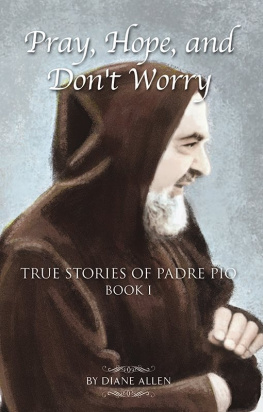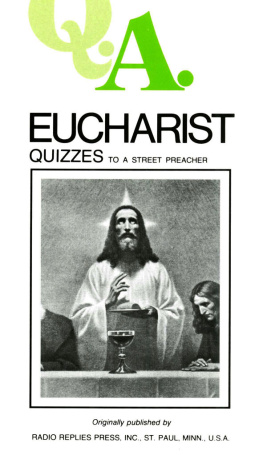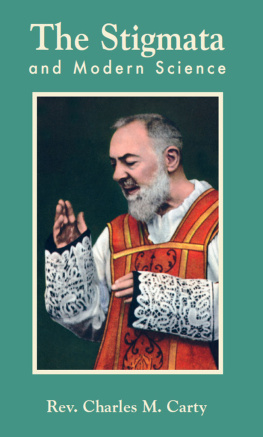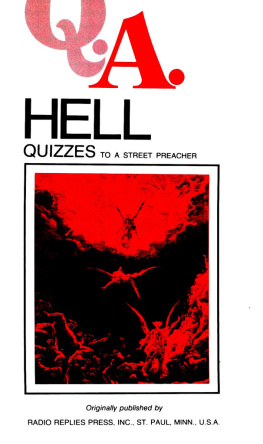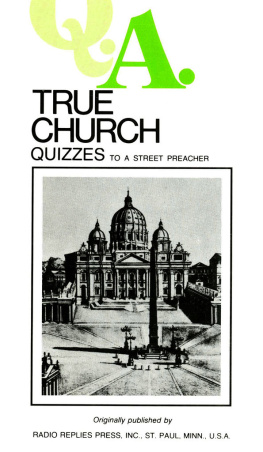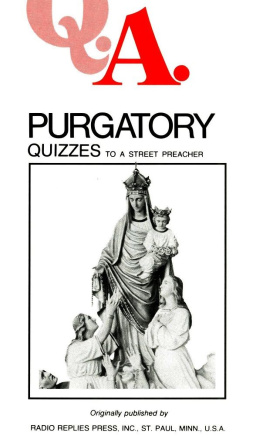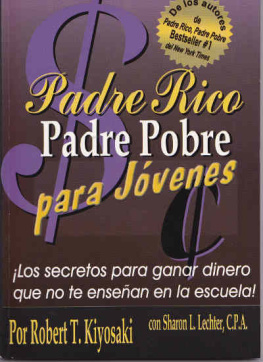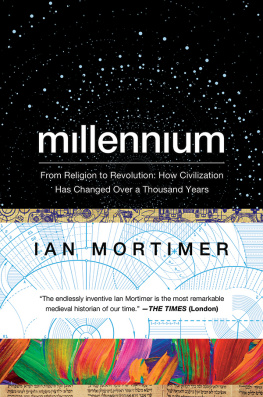Rev. Fr. Charles Mortimer Carty - Padre Pio: The Stigmatist
Here you can read online Rev. Fr. Charles Mortimer Carty - Padre Pio: The Stigmatist full text of the book (entire story) in english for free. Download pdf and epub, get meaning, cover and reviews about this ebook. year: 2015, publisher: TAN Books, genre: Detective and thriller. Description of the work, (preface) as well as reviews are available. Best literature library LitArk.com created for fans of good reading and offers a wide selection of genres:
Romance novel
Science fiction
Adventure
Detective
Science
History
Home and family
Prose
Art
Politics
Computer
Non-fiction
Religion
Business
Children
Humor
Choose a favorite category and find really read worthwhile books. Enjoy immersion in the world of imagination, feel the emotions of the characters or learn something new for yourself, make an fascinating discovery.

- Book:Padre Pio: The Stigmatist
- Author:
- Publisher:TAN Books
- Genre:
- Year:2015
- Rating:5 / 5
- Favourites:Add to favourites
- Your mark:
- 100
- 1
- 2
- 3
- 4
- 5
Padre Pio: The Stigmatist: summary, description and annotation
We offer to read an annotation, description, summary or preface (depends on what the author of the book "Padre Pio: The Stigmatist" wrote himself). If you haven't found the necessary information about the book — write in the comments, we will try to find it.
Padre Pio: The Stigmatist — read online for free the complete book (whole text) full work
Below is the text of the book, divided by pages. System saving the place of the last page read, allows you to conveniently read the book "Padre Pio: The Stigmatist" online for free, without having to search again every time where you left off. Put a bookmark, and you can go to the page where you finished reading at any time.
Font size:
Interval:
Bookmark:
PADRE PIO
THE STIGMATIST
Rev. Charles Mortimer Carty
| Imprimatur: | John Gregory Murray |
| Archbishop of St. Paul |
Copyright 1963 by Radio Replies Press, St. Paul, Minnesota.
Copyright 1973 by TAN Books.
All rights reserved. No part of this book may be reproduced or transmitted in any form or by any means, electronic or mechanical, including photocopying, recording, or by any information storage or retrieval system, without permission in writing from the publisher.
Library of Congress Catalog Card No.: 88-51884
The 120 photographs used in this book are inserted with the permission of the copyright owner. For copies of pictures, address Signor Frederico Abresch, San Giovanni Rotondo, Foggia, Italy.
TAN Books
Charlotte, North Carolina
www.TANBooks.com
2010

Photo courtesy of Our Lady of Grace Capuchin Friary,
San Giovanni Rotondo, Italy
Padre Pio
1887-1968
It would be easier for the earth
to carry on without the sun than
without the Holy Mass.
Padre Pio
Contents
Preface to the Tenth Edition
During the month of July, 1952, I had for the second time the opportunity and privilege of visiting Padre Pio and his brethren at the Capuchin Monastery of Madonna delle Grazie at San Giovanni Rotondo, Foggia, Italy. Although I had heard very much about Padre Pio from my dogma professor, Monsignor Bonardi, at the Archbishops Seminary in Florence, Italy during my fourth year of theology in 1923, I never had the privilege of seeing Padre Pio celebrate Mass until my first visit to San Giovanni in April of 1950. It was then and there, after that Mass which spellbound Catholics and non-Catholics alike, that I made up my mind to publish the first English book on this first priest to be stigmatized. I wanted to ac quaint my fellow Americans with his existence and his extraordinary works and accomplishments in winning souls by the thousands back to God through his hours of labor in the confessional. As St. John Vianney is called the great confessor of France, so today Padre Pio is widely known throughout the world as the great confessor of Italy.
Before going to San Giovanni in 1952 I visited Fragneto lAbate, where most of the Italian colony of St. Paul, Minnesota, came from. This town is but three miles away from the town of Pietrelcina, where Padre Pio was born in 1887. After preaching at both Sunday Masses to the people of Fragneto lAbate, I went over to Pietrelcina to photograph the room in which Padre Pio was born, the church where he was baptized, the favorite nook where he studied and prayed near his birthplace, the people associated with him in childhood and the various and numerous individuals who confirmed many of the points brought out in this book. All these places and persons were pointed out to me by Michael Forgione, the only living brother of Padre Pio, and by Padre Alberto, the Father Guardian of the new Capuchin Monastery at Pietrelcina. I stood on the spot where Padre Pio as a young seminarian prophesied the future erection of a monastery. The details about this prophecy I obtained from the archives of the monastery and from the Father Guardian, Padre Alberto.
Pietrelcina, a little town in the province of Benevento, has a population of about 5,000 and is mighty proud of being the birthplace of the first stigmatized priest. The town, which is preeminently devoted to agriculture, is about six miles from Benevento by railroad. There are two churches in Pietrelcina. The mother or parish church was recently renovated and beautified through donations from the Italian immigrants of Pietrelcina who for the most part are now living in New York City and Jamaica, Long Island. There is also the little church of St. Ann where Padre Pio as a child, a cleric, and a young priest, passed many long hours of both day and night in prayer and meditation. When Padre Pio was still a seminarian he often passed long periods at Pietrelcina for reasons of health. He assiduously frequented the church and assisted devoutly at Mass and sacred devotions. Amongst the seminarians from the town he, the humble brother, was the most esteemed and beloved by the pastor, his own cousin Don Salvatore Pannullo, for his extraordinary kindness and humility. One evening, whilst the young seminarian was out for a walk with Archpriest Pannullo and with other seminarians along the road which forks one way to Benevento and the other to Pesco Sannita, he suddenly called the attention of everyone and exclaimed out loud, What a beautiful odor of incense and what beautiful chanting of Friars. Some day there will arise a monastery on that spot, indicating with his finger the exact spot where the monastery and the church would be built. It was a prophecy. Whilst his companions laughed it off, Arch priest Pannullo exclaimed: If it is the desire of Heaven, it would be the greatest fortune for Pietrelcina.
In 1922 the prophecy became a reality. Miss Mary McAlpin Pyle of New York, a former Presbyterian, became a Catholic as a result of watching Padre Pio say Mass. After her conversion, she lived in her villa within the shadows of the monastery where Padre Pio had lived after 1917. She was the beloved spiritual child of Padre Pio, to whom she confessed every Wednesday in the garb of a Franciscan Tertiary which she always wore. With the enthusiasm of the people, this great soul spent her entire fortune to bring about the fulfillment of that prophecy and the great hearts desire of Padre Pio. She gave her heart and her capital to build that monastery and church to bring about the reality of the odor of incense and the chanting of friars.
His Eminence Cardinal Luigi Lavitrano blessed the first stone, and the monastery was finished in 1926. In 1928 the cornerstone of the church was laid with this inscription:
The year of Our Lord 1928, the 24th of May, his Eminence Luigi Lavitrano most worthy Archbishop of Benevento placed this stone cut from the quarry of this countryside, the first of the Church dedicated to the Holy Family, to St. Francis of Assisi, by the faithful of Pietrelcina in the presence of the commission presided over by the Major Doctor Rodigo Crafa. Receive, O Lord, the petitions, the prayers and the acts of love of this Thy people, who today in the holiness of the liturgy consecrate it to the Divine Family, under the intercession of Thy Levite, Francis of Assisi.
The work was suspended when only a few feet of the walls of the church were built. Work was resumed in 1949, and in two years the present artistic Romanesque church was finished to resound to the chanting and psalmody of the friars who now occupy that monastery, united with the choirs of Heaven.
English speaking visitors to Padre Pio could always be the recipients of Miss Mary Pyles gracious hospitality and her treasury of knowledge on Padre Pio events. Most of her time was spent as host to the American and English visitors, and in particular to the boys in the military services who flocked there by the hundreds. Miss Pyle, who spent all her capital on this monastery, accepted donations to complete the equipment of this church at Padre Pios birth place. Miss Pyle purchased for the Capuchins the one-room house in which Padre Pio was born, for a future chapel, and also the house of two rooms which Padre Pios father was able to buy with his first earnings as a laborer at Jamaica, Long Island, in 1898.
On June 30, 1952, I arrived at this hallowed town of San Giovanni Rotondo to study the events recently connected with Padre Pio and to have the privilege of being embraced by him on three occasions in the Franciscan and European custom of cheek to cheek. I was present at several of his Masses to study the changing expressions of his face in his prolonged minutes of either contemplation or ecstasy. I marveled at his wit in recreation and rejoiced at his human gruffness as he shouted, with his booming voice, commands to the noisy congregation to keep silence and to kneel for the prayers at the beginning of Mass.
Next pageFont size:
Interval:
Bookmark:
Similar books «Padre Pio: The Stigmatist»
Look at similar books to Padre Pio: The Stigmatist. We have selected literature similar in name and meaning in the hope of providing readers with more options to find new, interesting, not yet read works.
Discussion, reviews of the book Padre Pio: The Stigmatist and just readers' own opinions. Leave your comments, write what you think about the work, its meaning or the main characters. Specify what exactly you liked and what you didn't like, and why you think so.



